- JAPANESE
- LANGUAGE
X
 THAT IS GOOD
THAT IS GOOD
This is the second part of Yusuke Hamamoto’s interview.
We asked him about his activities overseas, his love for tattoos, which inspire him to create, and many other things. Let’s have a look.
-Bonsai seems to be very popular overseas, do you get many offers from overseas?
Before Covid-19 pandemic, there were many. Since wood is a plant, importing and exporting it is very difficult. I’m not saying that I took advantage of this, but I had no choice but to make it locally, so I could go overseas.
When I went overseas, they had about 100 trees ready for me… I was sometimes in a can from there
-Which countries are the most common?
I’ve been doing this for a long time in Germany, and in the United States.
There have been times when I’ve worked in Taiwan and China, but basically, I’ve always worked in Germany and the United States.
-Do you have any difficulties with the differences between foreign plants and Japanese plants?
That’s not true at all. We deal with similar trees.
The only thing you have to be careful of is the difference in climates, for example, in California, there is a lot of sunshine, so you have to control the environment and make the appearance to fit it.
It’s called TPO(Time, Place and Occasion) lol
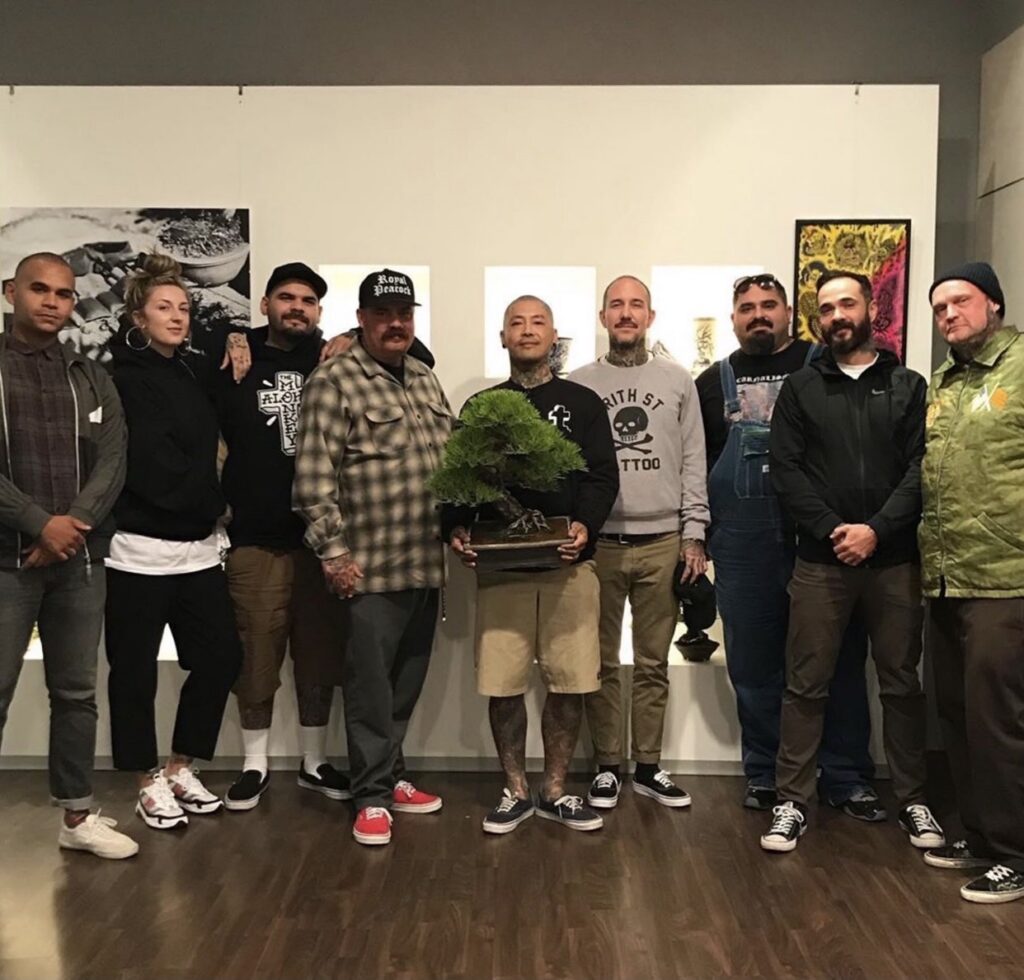
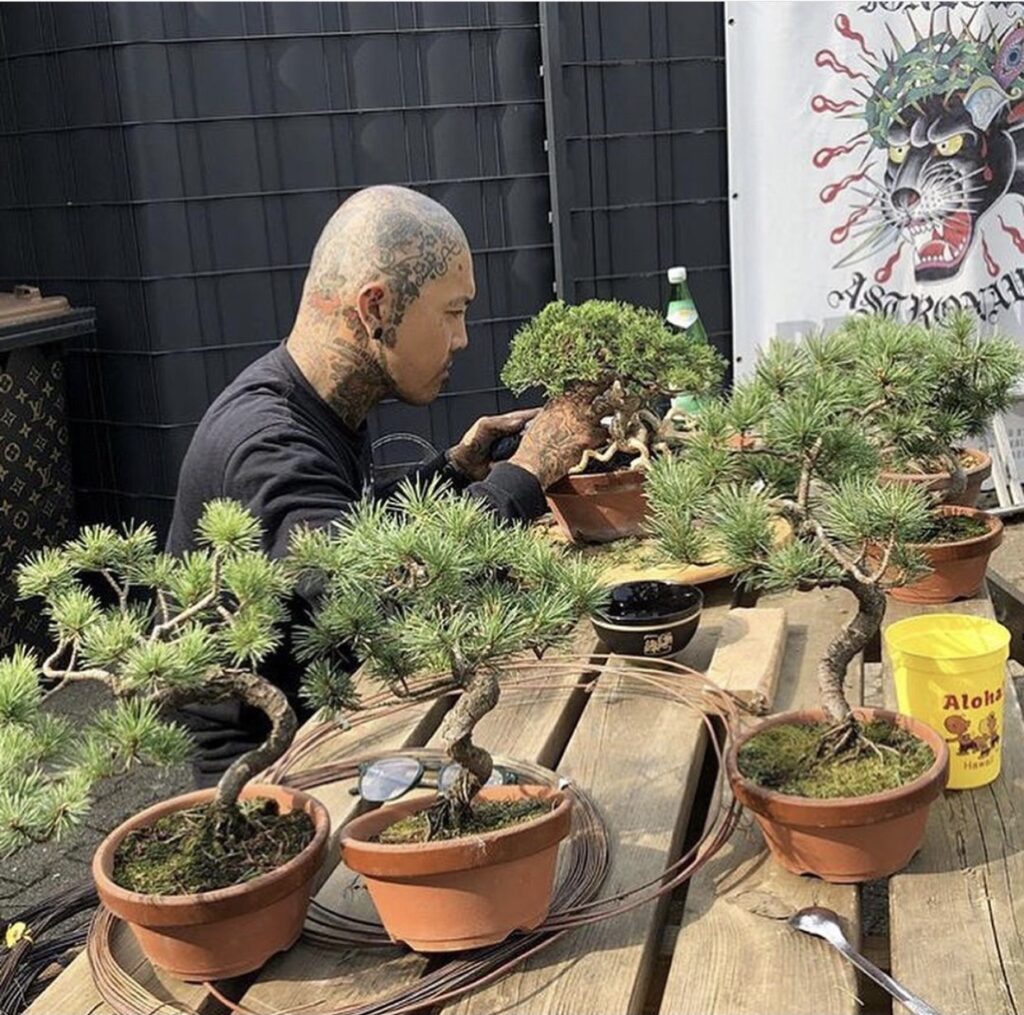
A scene from his work in Los Angeles.
-Does your overseas work come from private clients?
I like tattoos, and Americans have a fascination with Japanese carving and bonsai, just like Japanese people have a fascination with American tattoos.
So every year I would go abroad and ask my friend to tattoo me and make bonsai trees for me to trade, and that kind of thing spread through horizontal connections and became my job.
-It’s nice to see connections related to something you love expanding!
This is a bit of a digression, but is there any particular reason why you got a tattoo?
I got a tattoo when I was 18 years old, and I had been longing for one since I was in high school. The tattoo artist I wanted to get tattooed was in LA, and I called him while looking up the dictionary, and he said it looked like I could get an appointment. After graduating from high school, I went to L.A. by myself, half expecting to get a tattoo, but I did.
My first experience was very good, and that was a big factor.
The gentleman was kind and treated me well, and I thought, “This is great. I was hooked from there.
Even after that, as I kept researching because I liked it so much, I fell even more in love with the environment and atmosphere of L.A., so I kept going back, and it was like a stamp rally.
I’ve had my work engraved in Japan, Germany, several places in the US, Bali, and Thailand, and I’ve had about 150 people engrave for me so far.
-150 people! That’s amazing! In other countries, tattoos are more common than in Japan, but at Hamamoto’s level, it’s as if they are surprised like,”Wow! Wow!”
Maybe it’s the environment around me, but there are people who have more tattoos than me, so it’s pretty normal. I don’t get to do that very often, partly because I look at the people who are in it and think it’s cooler than I do.
-By the way, how do you think people will react to this in Japan? It’s a sensitive issue, and I think it’s a topic that’s been discussed quite a bit.
I think it’s a matter of manners and etiquette.
I think there are people who are offended by tattoos, so I wear long sleeves and a knit cap. It’s not that I want to stand out…The only way to get recognition is to work steadily, and if you suddenly go to your child’s field day, they will say, “What?” So, I think it is important for people to recognize that I am a bonsai creator and that I am the father there. I take my children to and from kindergarten and greet them there to make sure they know who I am.
-You’ve been thinking very hard and taking action. By the way, on your Instagram, you have uploaded pictures that remind me of tattoos, but you draw them yourself, right?
That’s what happens, right?
It’s a collaboration with a carver I know, my friend drew the snake, and I drew the butterfly and bonsai.
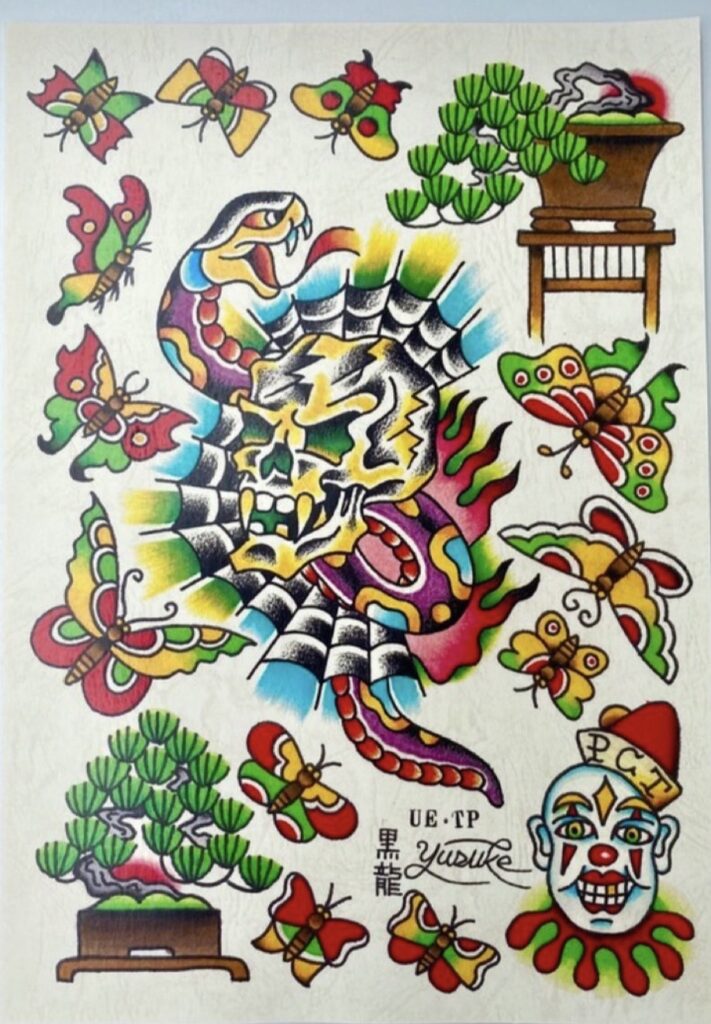
-Why did you decide to paint?
It’s for fun.
When I’m in L.A., I hang out with the sculptors, and when they’re not busy, they hand me a pen and say, “You should draw, too!” At first, I was just drawing as a prank, but then they gave me advice like, “Use this pen! But as I got advice from them, I started to enjoy it.
Once I started drawing, I started to sell a little. I wasn’t complacent lol
I’ve been drawing for about three years now, but I guess I am easily addicted.
Bonsai and painting. I can do it all the time.
I also draw with my children.
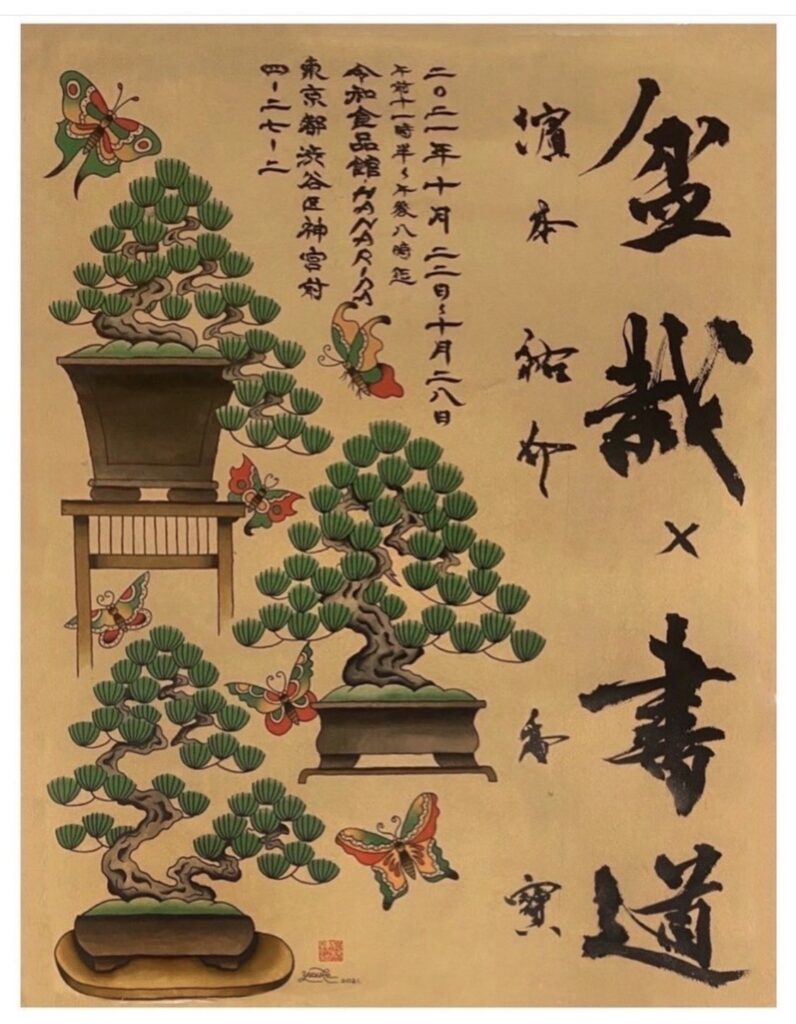
-The taste of the painting and what you just said, the carver is still the root of the technique.
Yes, that’s right. The people who taught me were tattoo carvers, so it’s the way they put the colors in when they do the tattoos. The way they blur the colors and get away with it is completely influenced by the tattoos.
-Is it because of the greenery, or is it because of the tattoo roots?
Oh, yes. Basically, it consists of five colors: green, black, brown, yellow, and red. In the old days, tattoos didn’t have blue, so they were made up of five colors. I’d like to keep it that way rather than using too many flashy colors. Sometimes I even use a light blue.
-After all, tattoos are closely linked to your creative work.
Do you find that your painting and bonsai activities influence each other?
They are both connected.
When a gardener gets up on a stepladder to cut a tree, the sky is a sketchbook. I’ m drawing a picture in the sky.
When I draw a picture as a work of art, it’s on the campus. Technique is an accumulation of skills, and the essence remains the same.
But I can’t draw the Virgin Mary or other motifs without looking at stencils, but I can draw bonsai perfectly freehand based on my own image.
I can draw a bonsai perfectly freehand based on my image. My hand just moves by itself. Isn’t that amazing? lol
-I sound like an artist. lol
By the way, do you feel uncomfortable being called a bonsai artist?
Of course, I have a purely artistic side that draws pictures, and I understand that bonsai has many charms that can be considered art, but you don’t see it as art. I’m sure you can understand that bonsai has many charms that can be considered art, but I felt that you might be thinking of it more as a tradition of life produced by craftsmen than as art.
“What is art?” I think about it.
I used to feel tickled to be called a bonsai artist.
But my experience in America changed that. Through conversations with people in the US, I don’t mind being called an artist anymore.
I don’t know what it is, but I don’t really care what people call me, it all depends on the bonsai I make.
-I feel a craftsman’s attitude in the idea that the end result is a work of art. Because of this stance, I would like to ask you, is bonsai a difficult thing to learn?
I don’t think that’s true.
I don’t think it’s good to lower the threshold, and I don’t mean to take it lightly because I also think it’s a traditional culture and something that will remain for a long time and be passed down from generation to generation, but I think it’s something that can be enjoyed as much as you want using materials that you have around you.
-I see. When I was a child, I had an image of bonsai as a lofty thing for old men to enjoy, and when I became an adult, I received half-hearted information about the various worlds and depths of bonsai, so it was even more difficult for me to get involved.
This may be a moot point, but since it is a living thing, you may have to feel the same way about it as you do about a pet. Even a bonsai needs to be watered, and when you go on a trip, you have to ask someone to take care of it. It’s not the end of the world after you buy it, you have to take care of it after you buy it.
But recently, I got a dog and I have to take care of its feces, so I think bonsai is easier lol
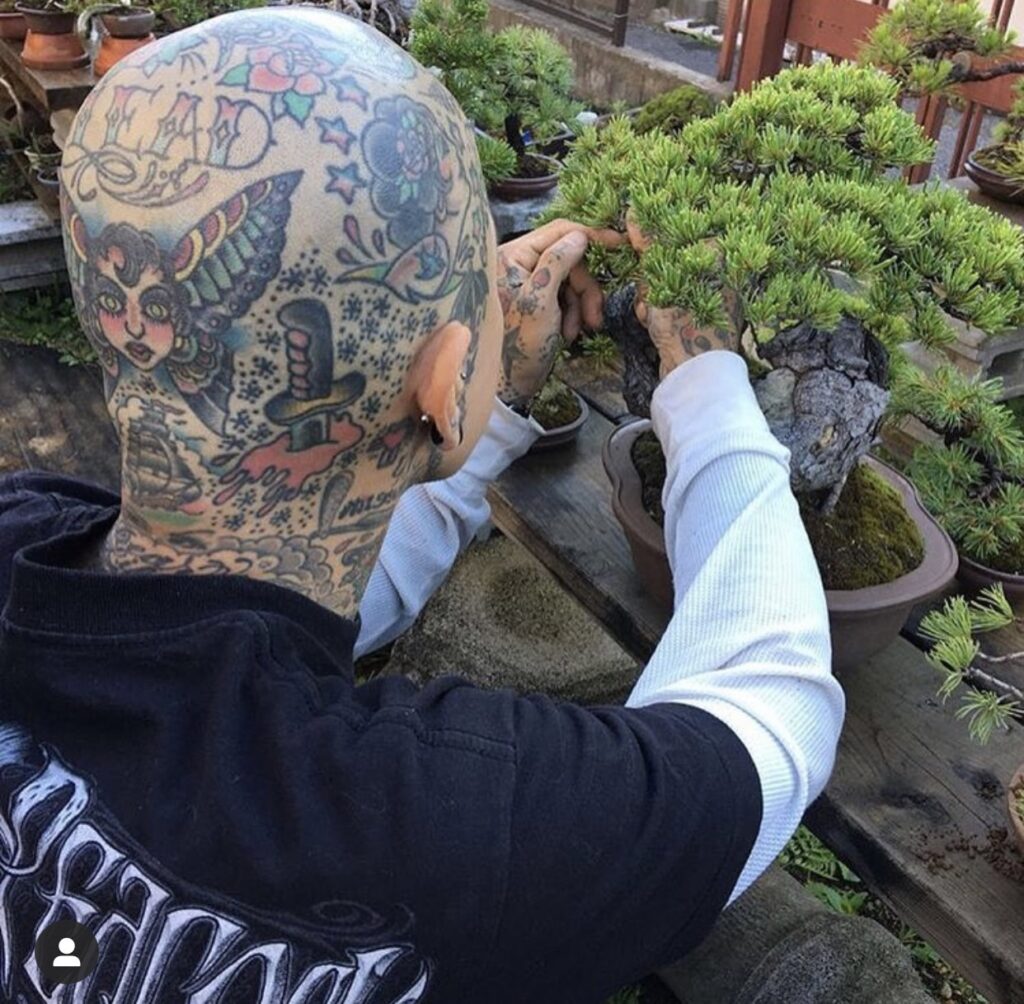
-I’m sure once the dogs get used to it, they’ll be fine!
As a final question, do you have any thoughts on this exhibit?
There is a part of me that doesn’t want to end up with just love, but I just want to bring what I want to bring.
You have a theme in mind, right? “Why don’t I just draw a bonsai tree?” lol Well, that’s the only way I can compete.
This is the interview with Mr. Hamamoto. As a beginner in art, I realized that bonsai is also art! As a beginner in the art world, I realized that bonsai is also art, and by listening to him again, I felt that bonsai has something in common with art, but I also thought that bonsai has its own world view.
I think that breathing life into a work of art, giving it life force and making it attractive is a common denominator of a good work of art, but when Mr. Hamamoto talks about bonsai, he always talks about bonsai as something that has life. When he talks about bonsai, he always talks about it as a “living thing” and the key words “life” and “life and death” come up, and I felt that bonsai is an interaction between living life and people.
Through this interview, I learned that bonsai is beautiful because it creates a sense of tension in the space.
I hope that everyone will visit the exhibition to see and touch the life that bonsai trees create and the pictures that are inspired by them.
The next installment of this series is by Mai Nagamoto. She draws cats, monsters, and other forms of fantasy, but also confronts serious reality in her work. Please look forward to it.
TEXT : THAT IS GOOD editorial department, Koga
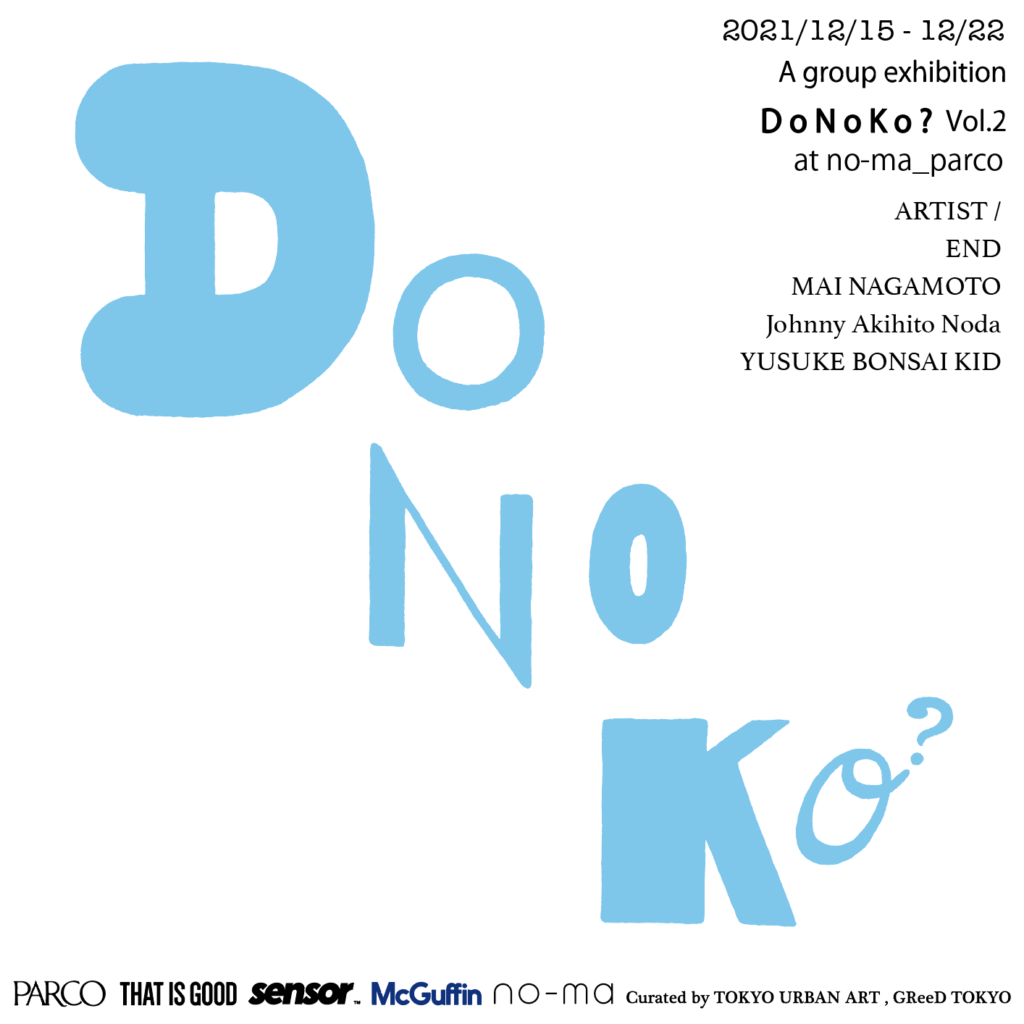
2021/12/15-12/22
A group exhibition
D o N o K o ? Vol.2
Curated by TOKYO URBAN ART , GReeD TOKYO
at @noma__official
ARTIST /
END
MAI NAGAMOTO
Johnny Akihito Noda
YUSUKE BONSAI KID
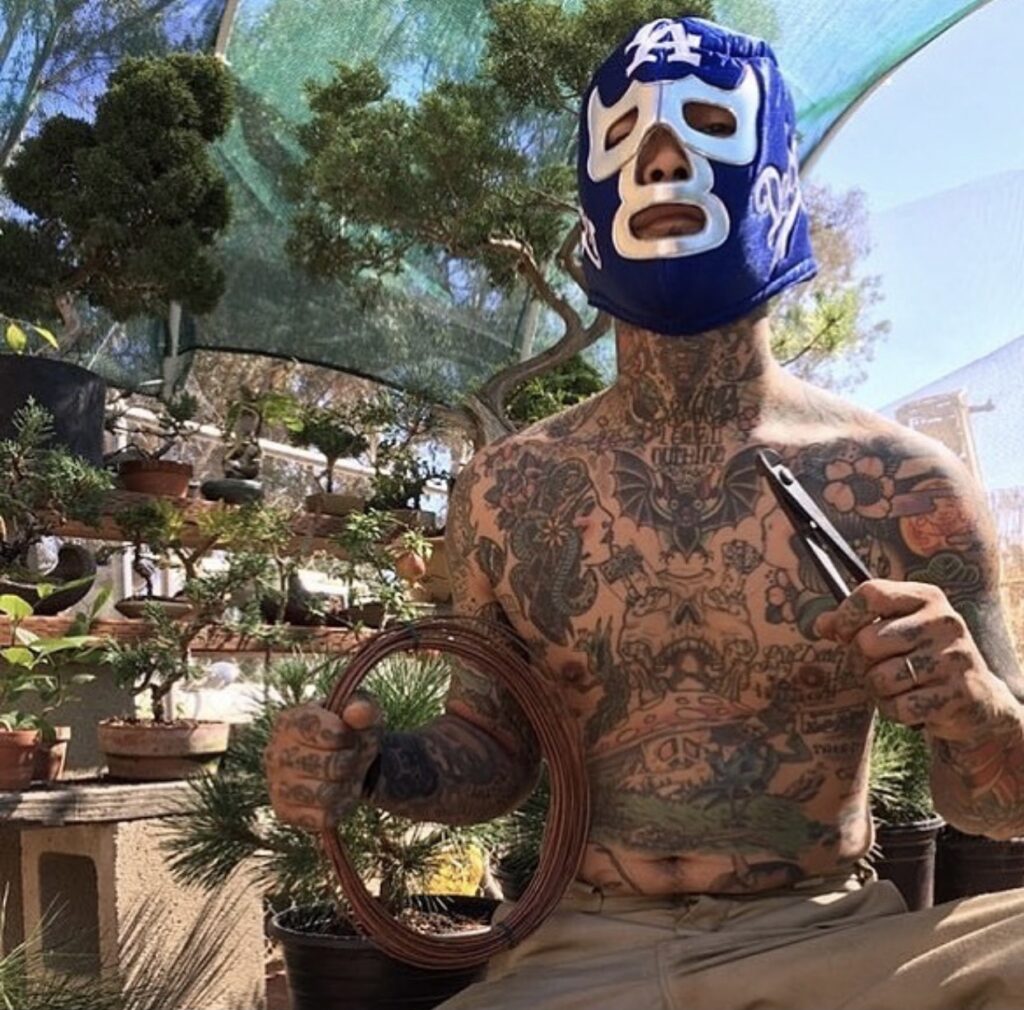
YUSUKE BONSAI KID / Yusuke Hamamoto
Born on December 10, 1979.
He started training under his master at the age of 21, and became independent at the age of 29, establishing Hamamoto Minematsuen. He is the father of two children.